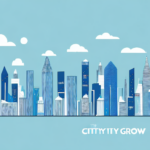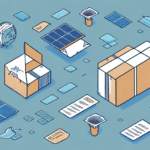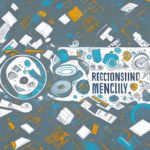The Benefits of Recycled Packaging for the Environment
In today's society, consumers are increasingly conscious of environmental issues and actively seek eco-friendly products. One effective way businesses can contribute to this trend is by implementing environmentally sustainable packaging solutions. Recycled packaging is an excellent option that helps reduce waste, conserve resources, and provides economic benefits. This article explores the numerous benefits of recycled packaging for the environment.
Understanding Recycled Packaging and Its Environmental Importance
Recycled packaging refers to packaging materials that have been previously used and processed for reuse. This practice is crucial for several reasons:
- Waste Reduction: Recycling packaging helps decrease the volume of waste that ends up in landfills. According to the Environmental Protection Agency (EPA), recycling can significantly reduce the environmental footprint of packaging waste.
- Resource Conservation: Utilizing recycled materials requires fewer raw resources, conserving natural assets like timber, water, and minerals.
- Energy Savings: Producing recycled packaging materials generally consumes less energy compared to manufacturing new materials. For instance, recycling aluminum saves up to 95% of the energy required to produce it from raw ore (Aluminum Association).
- Carbon Footprint Reduction: By reducing the need for raw material extraction and processing, recycled packaging helps lower greenhouse gas emissions associated with production.
The Environmental Impact of Traditional Packaging Methods
Traditional packaging methods, such as single-use plastics and non-recyclable materials, pose significant environmental challenges:
- Pollution: Non-recyclable packaging contributes to soil and water pollution, harming wildlife and ecosystems.
- Landfill Overflow: Single-use packaging takes up valuable space in landfills and can take hundreds of years to decompose.
- Non-Renewable Resource Consumption: Traditional packaging often relies on non-renewable resources, exacerbating resource depletion.
- High Energy Consumption: The production and transportation of traditional packaging materials require substantial energy, leading to increased carbon emissions.
Adopting recycled and sustainable packaging alternatives is essential for mitigating these environmental impacts and moving towards a more sustainable future.
How Recycled Packaging Reduces Waste and Conserves Resources
Implementing recycled packaging solutions offers several environmental and economic advantages:
Waste Reduction
Recycled packaging diverts waste from landfills, reducing the environmental burden of waste management. The EPA estimates that recycling and composting prevented the release of approximately 184 million metric tons of carbon dioxide equivalent in 2018 alone.
Resource Conservation
Using recycled materials minimizes the need for virgin resources. For example, recycling paper saves approximately 60% of the energy and 74% of the water compared to producing virgin paper (Recycle Across America).
Economic Benefits
Businesses can achieve cost savings by using recycled materials, as they often cost less than new materials. Additionally, companies that adopt sustainable practices can enhance their brand image and appeal to environmentally conscious consumers, potentially increasing sales and customer loyalty.
The Role of Recycling in Reducing Greenhouse Gas Emissions
Recycling plays a pivotal role in lowering greenhouse gas emissions, which are major contributors to global warming:
- Lower Emissions from Production: Manufacturing products from recycled materials typically emits fewer greenhouse gases compared to producing them from raw materials.
- Methane Reduction: Recycling organic packaging materials reduces methane emissions from landfills, where such materials would decompose anaerobically.
- Energy Efficiency: Recycling consumes less energy, further decreasing the carbon footprint associated with production processes.
According to the EPA, recycling and composting can significantly reduce greenhouse gas emissions, contributing to climate change mitigation efforts.
The Economic Benefits of Using Recycled Packaging Materials
Adopting recycled packaging offers multiple economic advantages for businesses:
- Cost Savings: Recycled materials often cost less than virgin materials, reducing production expenses.
- Waste Disposal Savings: Businesses can lower waste management costs by generating less waste and utilizing recycling services.
- Market Differentiation: Companies that use sustainable packaging can differentiate themselves in the market, attracting eco-conscious consumers and potentially commanding premium pricing.
- Regulatory Compliance: Adopting recycled packaging can help businesses comply with environmental regulations and avoid potential fines.
By integrating recycled packaging, businesses not only contribute to environmental sustainability but also enhance their economic performance and competitive advantage.
Types of Recycled Packaging Materials Available in the Market
The market offers a diverse range of recycled packaging materials that businesses can integrate into their operations:
- Paper and Cardboard: Widely used for boxes, envelopes, and cartons. Recycled paper products help reduce deforestation and conserve water.
- Recycled Plastics: Materials like PET and HDPE are commonly recycled into new packaging products, reducing plastic waste and resource consumption.
- Aluminum: Recycled aluminum is used for cans and other packaging, offering high durability and recyclability without compromising quality.
- Bioplastics: Made from renewable resources such as corn starch or sugarcane, bioplastics offer a biodegradable alternative to traditional plastics.
- Mushroom Packaging: An innovative, biodegradable material made from mycelium, suitable for various products and reducing reliance on conventional plastics.
Embracing these materials supports the circular economy, where products are reused and recycled, minimizing waste and resource depletion.
Best Practices for Incorporating Recycled Packaging into Your Business Operations
To effectively integrate recycled packaging, businesses should follow these best practices:
Selecting Sustainable Suppliers
Choose suppliers committed to sustainability and offering high-quality recycled materials. Verify their certifications and sustainability practices to ensure alignment with your company's values.
Transparent Communication
Clearly communicate your sustainability efforts to customers through marketing channels and transparent reporting. Highlight the benefits of recycled packaging to build trust and loyalty.
Implementing a Circular Economy
Develop systems that promote the reuse and recycling of packaging materials. This includes designing packaging for durability and ease of recycling, and establishing take-back programs for used packaging.
Regular Audits and Assessments
Conduct regular audits of packaging materials and waste production to identify areas for improvement. Use these insights to enhance recycling processes and reduce waste.
Employee Education and Training
Educate employees about the importance of sustainability and provide training on proper handling and disposal of packaging materials. Engaged employees are crucial for the successful implementation of sustainable practices.
Adhering to these best practices ensures that businesses maximize the benefits of recycled packaging while minimizing environmental impact.
Innovations in Recycled Packaging Technology and Design
The recycled packaging industry is continuously evolving with new technologies and designs that enhance sustainability:
- Blockchain for Transparency: Blockchain technology is being used to track the lifecycle of packaging materials, ensuring proper recycling and providing consumers with transparency about the sustainability of products (Forbes).
- Biodegradable Plastics: Advances in bioplastic formulations are making them more durable and biodegradable, offering a sustainable alternative to conventional plastics.
- Hybrid Materials: Combining recycled materials with new materials enhances packaging durability and performance without compromising sustainability.
- 3D Printing: 3D printing technology allows for the creation of custom packaging solutions from recycled materials, reducing waste and optimizing material use.
Staying abreast of these innovations enables businesses to adopt cutting-edge sustainable packaging solutions, enhancing their environmental stewardship and market competitiveness.
Challenges Facing the Widespread Adoption of Recycled Packaging
Despite its benefits, the adoption of recycled packaging faces several challenges:
- Infrastructure Limitations: Inadequate recycling infrastructure can hinder the collection and processing of recyclable materials.
- Cost Factors: Recycled materials may sometimes be more expensive than virgin materials, posing a financial barrier for businesses.
- Consumer Awareness: Lack of consumer awareness about the benefits of recycled packaging can lead to low demand, discouraging businesses from investing in recycling initiatives.
- Standardization Issues: Inconsistent recycling standards and regulations across regions create confusion and complicate recycling efforts for businesses operating in multiple locations.
Overcoming these challenges requires collaborative efforts between businesses, governments, and consumers to improve recycling infrastructure, reduce costs through economies of scale, increase awareness, and establish standardized recycling practices.
The Future of Sustainable Packaging and Its Potential Environmental Impact
The future of sustainable packaging is promising, driven by increasing consumer demand and technological advancements:
- Biodegradable and Compostable Materials: Continued development of biodegradable packaging materials will reduce long-term environmental impacts and support waste management strategies.
- Smart Packaging: Integration of technology into packaging for better tracking and sustainability (e.g., using QR codes to provide recycling information).
- Circular Economy Models: Businesses adopting circular economy principles will prioritize reuse and recycling, minimizing waste and maximizing resource efficiency.
- Innovative Designs: Creative packaging designs that simplify recycling processes and reduce material usage will become more prevalent.
These advancements will not only mitigate the environmental impacts of packaging but also drive economic growth and innovation in the sustainability sector.
Case Studies Showcasing Successful Implementation of Recycled Packaging Solutions
Several companies have successfully integrated recycled packaging into their operations, demonstrating the feasibility and benefits of sustainable packaging:
- Coca-Cola: Coca-Cola has committed to using 50% recycled content in its bottles by 2030 and aims to make all of its packaging recyclable globally (Coca-Cola Sustainability).
- Walmart: Walmart has implemented sustainable packaging initiatives, including reducing packaging materials and increasing the use of recycled content, which has significantly lowered the company’s overall packaging footprint.
- The Body Shop: The Body Shop uses 100% recycled plastic for many of its product packaging and actively encourages customers to recycle their used packaging through return programs.
These case studies illustrate that adopting recycled packaging can lead to environmental preservation, cost savings, and enhanced brand reputation, making it a strategic choice for businesses striving for sustainability.
Conclusion
Recycled packaging offers substantial benefits to the environment, economy, and society. By reducing waste, conserving resources, and lowering carbon emissions, businesses can make meaningful contributions to sustainability efforts. As innovations continue to emerge and consumer demand for eco-friendly products grows, the adoption of recycled packaging is poised to increase, driving a more sustainable and eco-friendly future for all. Companies that prioritize sustainable packaging not only enhance their environmental stewardship but also gain a competitive edge in the market, positioning themselves as leaders in the movement towards a greener planet.






















